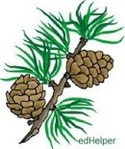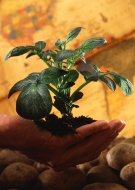
Worksheets and No Prep Teaching Resources
Reading Comprehension Worksheets
Plants

Plants
 Worksheets and No Prep Teaching Resources Reading Comprehension Worksheets Plants |
 Plants |
| edHelper's suggested reading level: | grades 6 to 8 | |
| Flesch-Kincaid grade level: | 6.41 |
|
Plant Parts
By Cindy Grigg |

|
 1 What are plants? Plants are living things that are made of many cells. They are autotrophs which means they can make their own food. They do this by a chemical reaction called photosynthesis.
1 What are plants? Plants are living things that are made of many cells. They are autotrophs which means they can make their own food. They do this by a chemical reaction called photosynthesis. |
Create Weekly Reading Books
Prepare for an entire week at once! |
| Leave your feedback on Plant Parts (use this link if you found an error in the story) |
 |
Plants
|
 |
Science
|